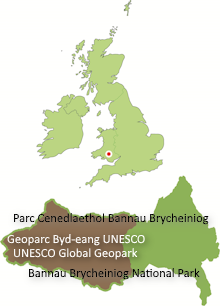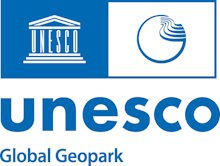A legacy of widespread limeburning
Scattered across the Geopark are limekilns of different shapes and sizes in varying states of collapse. They are a reminder of past times when the burning of limestone to produce quicklime was an important industry. Lime was in widespread use for making lime mortar before the advent of modern cement and was also used in the improvement of agricultural land. It had many other uses too.
Limestone is essentially calcium carbonate (CaCO3). When limestone is burnt at over 900oC – a process known as calcining – carbon dioxide gas is given off and a residue of quicklime (calcium oxide or CaO) remains.
CaCO3 -> CaO + CO2
Adding water to this – known as slaking – gives slaked lime (calcium hydroxide or Ca(OH)2 ).
CaO + H20 -> Ca(OH)2
Slaked lime will react slowly with carbon dioxide and water in the atmosphere to turn back to calcium carbonate – it is this which makes it a useful cement for binding bricks or stones together.
Limekilns were constructed where limestone and fuel for burning it could be brought together. The fuel would generally have been timber. They can often be found beside canals, roads or railways which would have enabled the limestone and wood (or coal) to have been brought to them and the lime to be taken readily away for use elsewhere.
A number of fine examples remaining at various places within the Geopark:
- south of the canal at The Watton, Brecon,
- the former Henllys Vale colliery in Cwm Twrch,
- Herbert’s Quarry off the Llangadog/Brynaman road
- Penwyllt in the upper Swansea Valley.



